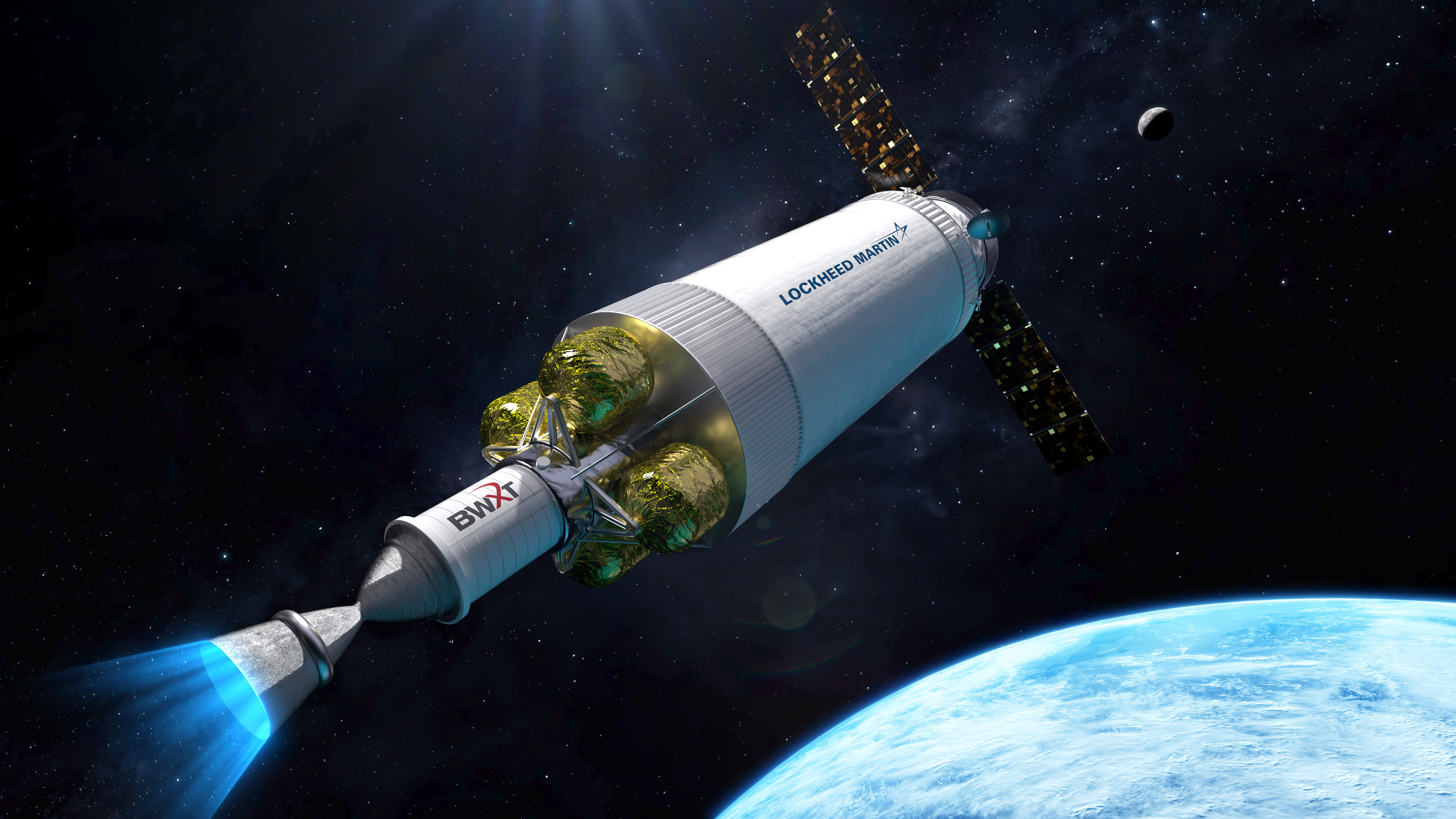
Nuclear power is experiencing a renaissance on Earth, and in space. Whether we’re talking about lunar bases or space exploration, nuclear might be the key to pushing beyond our current boundaries.
On the 25th of August 2012, the lonely Voyager 1 space probe crossed the threshold into interstellar space. At the time it was 18 billion km (11 million miles) away from the sun, far beyond all the planets of our solar system.
The Voyager 1 was launched in 1977. Almost 50 years later, it’s still going and sending back information, penetrating ever deeper into space. It can do that because it’s powered by nuclear energy.
Long a controversial energy source, nuclear has been experiencing renewed interest on Earth to power our fight against climate change. But behind the scenes, nuclear has also been facing a renaissance in space.
In July, the US National Aeronautics and Space Administration (NASA) and Defense Advanced Research Projects Agency (DARPA) jointly announced that they plan to launch a nuclear-propelled spacecraft by 2025 or 2026. The European Space Agency (ESA) in turn is funding a range of studies on the use of nuclear engines for space exploration. And last year, NASA awarded a contract to Westinghouse to develop a concept for a nuclear reactor to power a future moon base.
“There’s a lot of interest in nuclear for space applications at the moment,” said Dr Ramy Mesalam, programme director of spacecraft engineering at the University of Leicester. “The deeper we explore our solar system and beyond, the more attractive nuclear will become.”
Lunar night
One participant in this new boom is Zeno Power, a United States startup founded in 2018. A team led by them recently received a $15m award to develop so-called radioisotope nuclear power systems for use on the moon’s surface by NASA. These small, lightweight nuclear power systems have a long history of use in space, and can potentially use nuclear waste to power themselves.
NASA and international partners such as the European Space Agency (ESA) want to have a lunar base up and running before the end of the decade. This base will most likely partly use nuclear reactors for power and heat.

Nuclear power is particularly attractive for use on the moon because of the harsh conditions on the lunar surface. Darkness is a particular concern for longer-duration missions. “The lunar night lasts 14 Earth days”, said Tyler Bernstein, co-founder and CEO of Zeno Power. “There are also permanently shadowed regions, like craters. Generating solar power is impossible in the dark, and temperatures in some places can reach beyond -200 degrees Celsius.”
Bernstein hopes to have the first reactors ready by 2025.
Nuclear explosion
Space travel, however, is an inherently risky pursuit, particularly with nuclear materials on board. Rockets destined for space regularly explode, potentially spreading nuclear debris across space or even Earth. That’s a sobering reality that professor Dale Thomas of the University of Alabama in Huntsville is facing.
He works on nuclear-powered propulsion. Instead of powering a rocket through a chemical reaction, we would power it through a nuclear one.
So far we have mainly used nuclear reactions to provide electricity for spacecraft, but researchers like Thomas want to use these reactions to propel them forward.
That holds great potential to push us further into space, but also forces us to review the way we test rocket engines. Usually, these engines are tested on the ground, where they sometimes explode or suffer failures. This gives engineers key information to improve their designs. That model of testing and fixing, however, needs to be adapted to nuclear propulsion.
“Failing a nuclear engine on the test stand is not a good idea”, Thomas told Al Jazeera. “Its failure modes are much more catastrophic than those of chemical propulsion.”
Building a nuclear engine, in other words, requires researchers to be more cautious, and make sure no failure takes place. This in turn slows down development.
A similar situation is present in sending nuclear reactors up to space to power spacecraft and moon bases. Before we do so, they need to meet high safety standards, and even be ready to withstand explosions. Luckily, we have figured out how to do this. The first nuclear reactor was launched into space as early as 1965.
“The safety aspect is a challenge”, Mesalam said. “That’s always at the heart of a nuclear power system design. But the good news is that we have almost 60 years of experience in doing this safely.”
Interplanetary species
In the future, spacecraft might be powered by nuclear engines. We would probably propel them into an orbit around the Earth using chemical engines, and then turn on their nuclear propulsion to push them on missions far beyond our own planet.
“Chemical propulsion can get us off the Earth, and even to the moon”, said Thomas. “But when you’re going to Mars and beyond, it runs into its limits. Atomic propulsion will be key to going beyond that barrier.”
On top of that, nuclear propulsion would open up different ways of exploring space. Today, flights to places like Mars and the planets beyond are limited by time windows. Space organisations like NASA calculate complex trajectories that slingshot spacecraft off planets’ gravity fields, to save fuel. If higher-capacity and more powerful nuclear engines were available, this wouldn’t be such a high priority, giving us more flexibility when to launch these craft.
“A Ferrari will go faster than a Volkswagen because it has a more powerful engine”, said Thomas. “That’s what nuclear propulsion is to chemical propulsion.”
Before we get nuclear propulsion, however, we might need some time. Thomas argues that these craft will probably only really take off around 2030.
Once we have them, though, they might be a game changer. “Nuclear power and propulsion will be a huge foundational technology for bringing humans to Mars and beyond”, said Bernstein. “It will be key to making humanity an interplanetary species.”







